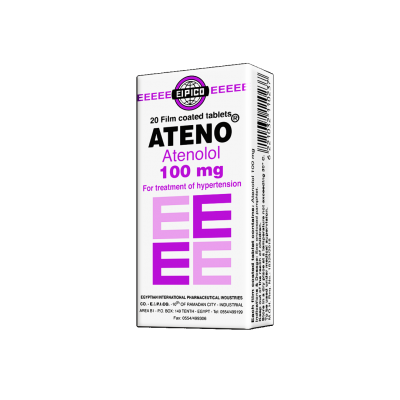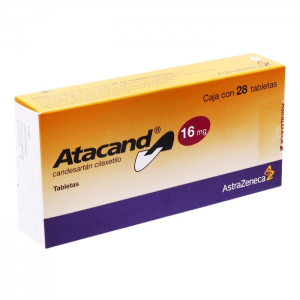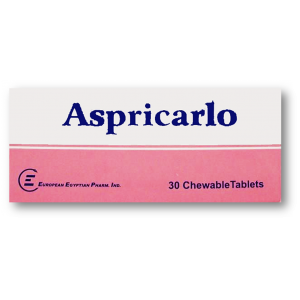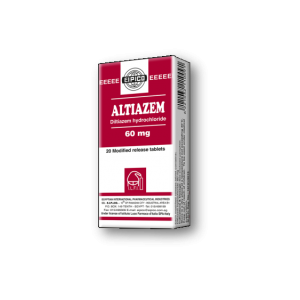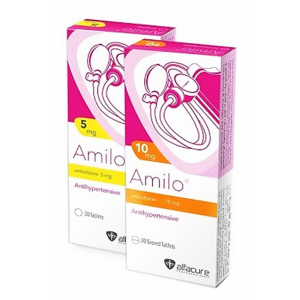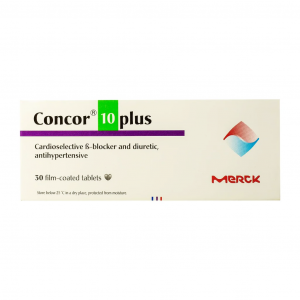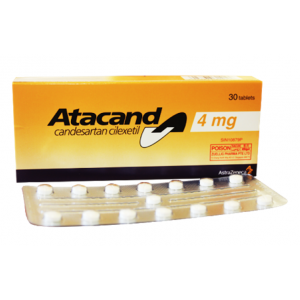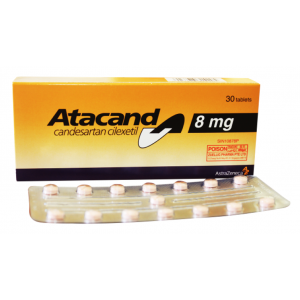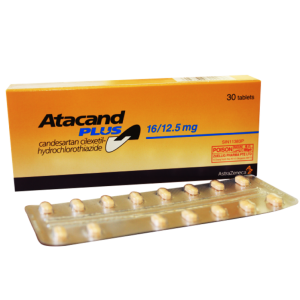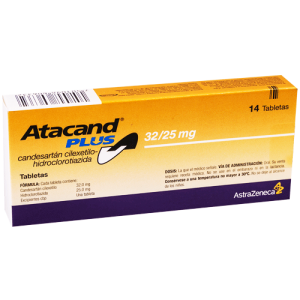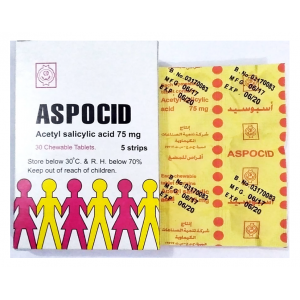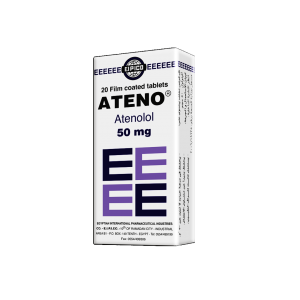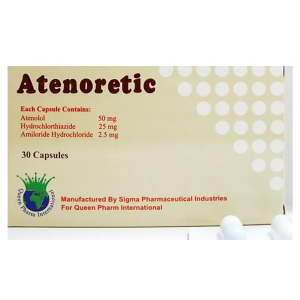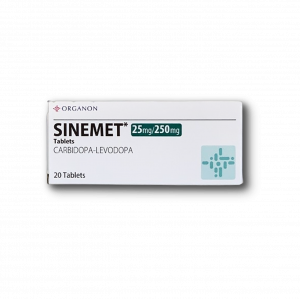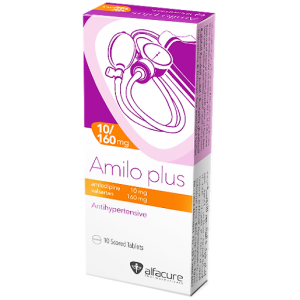- Anti-hestaminic & Respiratory Drugs (20)
- Anti-inflammatory Drugs (192) +-
- Baby & Mom (1322) +-
- Baby & Mom > Bath, skin & Hair > Skin Care > wibes (52)
- Beauty (3044) +-
- Beauty > Skin Care > whitening (307)
- Chemotherapy & Immune Response (883) +-
- Chemotherapy & Immune Response > ANTI-FUNGAL (11)
- Chemotherapy & Immune Response > Chemotherapeutic Agents > Hormone Antagonists >Enzyme Inhibitors (289)
- CIRCULATORY DISTURBANCE AGENTS (24)
- Diet & Fitness Products (284) +-
- DRUG AFFECTING CENTRAL NERVOUS SYSTEM (192)
- HEMATOLOGY (39)
-
Medical Supplies (503)
+-
- Chemicals & Disinfectants (19)
- Dental Supplies (31)
- Devices & Instruments (10)
- Diabetic Supplies (121)
- General Medical Supplies (21)
- I.V & Medical Solution (0)
- Intensive Care Unit & Anesthesia Supplies (0)
- KIDNEY UNIT SUPPLIES (21)
- Lab Supplies (3)
- Miscellaneous (21)
- Neonatal Unit Supplies (0)
- Operation Room Supplies (2)
- Sanitary (5)
- Sterilization Supplies (0)
- Surgical Sutures (4)
- Syringes (3)
-
Medicines & Health (2691)
+-
- Allergy & Sinus (95)
- Children's Health Care (54)
- Cough, Cold & Flu (277)
- Digestive Health & Nausea (233)
- Ear, Nose & Throat Care (179)
- Eye Care (124)
- Feminine Care (325)
- Foot Care (9)
- Orthopaedic Appliances (1)
- Pain Relief & Management (241)
- Pill Organizer (2)
- Skin Treatments (839)
- Sleep & Snoring Aids (2)
- Support & Braces (8)
- Medicines & health > Gout releif (42)
- Natural & Organic Products (81) +-
- OTC > Analgesics > Anti-inflammatory Drugs (44)
-
Personal Care (3275)
+-
- Bath & Body (271)
- Deodorant & Anti-perspirants (191)
- Ear, Nose & Throat Care (175)
- Eye Care (131)
- Feminine Care (374)
- Foot Care (17)
- Hair Care (472)
- Home Tests & Monitorings (14)
- Incontinence (7)
- Lip Care (22)
- Massage & Relaxation (17)
- Natural & Organic Personal Care (7)
- Oral Care (91)
- Pregnancy & Fertility (65)
- Shaving & Grooming (65)
- Sun Care (80)
-
Prescription Drugs (2914)
+-
- Analgesics (181)
- Cardiovascular System (374)
- Drugs Affecting Musculoskeletal System (65)
- Drugs Used In Infections (56)
- Ear & Nose Drugs (2)
- Endocrine System (176)
- Gastrointestinal Tract (244)
- Gastrointestinal Tract > Hepatology > Liver treatment (62)
- GYNECOLOGY (2)
- Miscellaneous (11)
- NEPHROLOGY > URINARY SYSTEM > RENAL DISORDERS > URINARY TRACT DISORDERS (46)
- NEUROLOGY (225)
- Nutrients & Blood Electrolytes (2)
- Respiratory System (154)
- SKIN > NAILS > HAIR > TOPICAL PREPARATIONS (100)
- Vaccines (1)
- Prescription drugs > Cardiovascular system > Anti-hypertension drugs (242)
- Sexual Wellness (301) +-
- Vitamins & Minerals Supplements (1212) +-
Ex Tax: 26EGP
Example
You can return the product within 14 days of purchase.
ReturnsYou can return the product within 14 days of purchase.

Ateno 100 mg ( Atenolol ) 20 tablets
Composition
Each film coated tablet contains:
Atenolol ................................................................................... 50 mg or 100 mg
Inactive ingredients:
ATENO 50 mg Film Coated Tablets:
Lactose monohydrate, maize starch, croscarmellose sodium, sodium lauryl sulphate, magnesium stearate, polyvinyl pyrrolidone K30, microcrystalline cellulose Ph 102, colloidal silicon dioxide, opadry II orange.
ATENO 100 mg Film Coated Tablets:
Lactose monohydrate, maize starch, croscarmellose sodium, sodium lauryl sulphate, magnesium stearate, povidone K30, microcrystalline cellulose Ph 102, colloidal silicon dioxide, opadry II orange.
Therapeutic Indications
For the management of hypertension, angina pectoris and cardiac dysrhythmias.
For early intervention in the acute phase of myocardial infarction.
Dosage and Administration
Dosage:
Adults and Children over 12 years:
Hypertension:
Most patients respond to 100 mg daily given as a single dose.
Some patients, however, will respond to 50 mg given as a single daily dose.
The effect will be fully established after one to two weeks.
A further reduction in blood pressure may be achieved by combining ATENO with other antihypertensive agents.
Angina:
Most patients respond to 100 mg once daily or 50 mg twice daily. It is unlikely that a higher daily dose would be additionally beneficial.
Dysrhythmias:
Initially controlled intravenously. A suitable oral maintenance dosage is 50-100 mg daily, given as a single dose.
Myocardial Infarction:
In suitable patients, initially controlled intravenously, followed by 50 mg orally about 15 minutes after the intravenous dose, provided no adverse effects occur.
This should be followed by a further 50 mg orally 12 hours later and then 12 hours later by 100 mg orally to be given once daily.
If bradycardia and/or hypotension requiring treatment, or other adverse effects occur, ATENO should be discontinued.
The Elderly:
Dosage requirements may be reduced, especially in patients with impaired renal function.
Children under 12 years:
ATENO is not recommended for use in children under 12 years of age.
Renal failure:
ATENO is excreted via the kidneys, therefore the dosage will need to be adjusted in severe renal conditions.
No significant accumulation of atenolol occurs at a GFR greater than 35 ml/min/1.73 m2 (normal range is 100-150 ml/min/1.73 m2).
For patients with a creatinine clearance of 15-35 ml/min/1.73 m2, the oral dose should be 50 mg daily or 100 mg once every two days, and for those with a creatinine clearance of less than 15 ml/min/1.73 m2, the oral dose should be 50 mg once every two days or 100 mg once every four days.
Patients on haemodialysis should be given 50 mg orally after each dialysis, when careful observations for a fall in blood pressure should be exercised.
Administration:
For oral administration.
Contraindications
ATENO, as with other beta-blockers, should not be used in patients with any of the following:
Second or third degree heart block.
Cardiogenic shock.
Uncontrolled heart failure.
Sick sinus syndrome (including sino-atrial block).
Untreated phaeochromocytoma.
Metabolic acidosis.
Bradycardia (less than 45-50 beats per minute).
Hypotension.
Hypersensitivity to atenolol or any of the excipients.
Severe peripheral circulatory disturbances.
Warnings and Precautions
Heart Failure: Care must be exercised in patients with heart failure because of the negative inotropic effects of ATENO. Such patients should be well controlled on digitalis before therapy commences. Close monitoring for progressive failure is essential. Similarly, care must be taken with patients with poor cardiac reserve.
Ischaemic Heart disease: Especially in patients with ischaemic heart disease, treatment should not be discontinued suddenly. The dosage should be gradually reduced, i.e. over 1-2 weeks, if necessary at the same time initiating replacement therapy, to prevent exacerbation of angina pectoris.
Untreated Congestive Heart disease: Beta-blockers should not be used in such patients. The condition should be stabilised first.
First Degree Heart Block: Due to its negative effect on conduction time, beta-blockers should only be given with caution to such patients.
Bradycardia: Beta-blockers may induce bradycardia. If the pulse rate decreases to less than 50-55 beats per minute at rest and the patient experiences symptoms related to the bradycardia, the dosage should be reduced.
Prinzmetal's angina: Beta-blockers may increase the number and duration of anginal attacks in patients with Prinzmetal's angina due to unopposed alpha-receptor mediated coronary artery vasoconstriction. Non-selective beta-blockers should not be used for these patients, and beta-1 selective blockers should only be used with the utmost care.
Peripheral Circulatory Disease: In patients with peripheral circulatory disorders (Raynaud's disease or syndrome, intermittent claudication), beta-blockers should be used with great caution as aggravation of these disorders may occur.
Respiratory Disorders: ATENO is cardioselective but not totally cardiospecific. Therefore, if it is necessary to use ATENO in patients with a history of asthma, bronchospasm or reversible obstructive airways disease, it should be introduced carefully. If an increase in airways resistance occurs, this can usually be reversed by bronchodilators such as salbutamol or terbutaline.
Liver or Kidney Insufficiency: patients with liver or kidney insufficiency may need a lower dosage, depending on the pharmacokinetic profile of the compound.
Phaeochromocytoma: ATENO should not be administered to patients with phaeochromocytoma without concurrent α-adrenoceptor blocking therapy.
Diabetics: The symptoms of hypoglycaemia may be masked by ATENO, in particular tachycardia. Diabetic patients should be warned that this 'warning sign' may not occur.
Insulin sensitivity may be reduced in patients treated with ATENO.
Thyrotoxicosis: ATENO as with other beta-blockers may mask the signs of thyrotoxicosis.
Allergies: Beta-blockers may increase both the sensitivity towards allergens and the seriousness of anaphylactic reactions. Such patients may be unresponsive to the usual doses of adrenaline (epinephrine) used to treat allergic reactions.
Hypersensitivity: ATENO may cause a hypersensitivity reaction including angio-oedema and urticaria.
Psoriasis: Patients with anamnestically known psoriasis should take beta-blockers only after careful consideration.
Elderly: These patients should be treated with caution, starting with a lower dosage but tolerance is usually good in the elderly.
Anaesthesia: In patients undergoing general anaesthesia, beta-blockade reduces the incidence of arrhythmias and myocardial ischemia during induction and intubation, and the post-operative period. It is currently recommended that maintenance beta-blockade be continued peri-operatively. The anaesthesist must be aware of beta-blockade because of the potential for interactions with other drugs, resulting in bradyarrhythmias, attenuation of the reflex tachycardia and the decreased reflex ability to compensate for blood loss. If it is thought necessary to withdraw beta-blocker therapy before surgery, this should be done gradually and completed about 48 hours before anaesthesia.
Drug Interactions
Alcohol: Concomitant use with alcohol may lead to an enhanced hypotensive effect.
Alpha blockers: Some patients experience acute postural hypotension, tachycardia and palpitations when they start to take certain alpha blockers (e.g. prazosin, alfuzosin, and terazosin); this can be exacerbated if they are already taking a beta-blocker. It is recommended that they should start with a low dose of these alpha blockers, and the first dose should be taken just before they go to bed. Patients should be warned about the possibility of postural hypotension and how to manage it (lay down, raise legs and get up slowly).
When adding a beta-blocker to an alpha blocker it may be advisable to decrease the dose of the alpha blocker and re-titrate as necessary.
Anaesthetics: Caution must be exercised when using anaesthetic agents with ATENO. The anaesthetist should be informed and the choice of anaesthetic should be an agent with as little negative inotropic activity as possible. Use of beta-blockers with anaesthetic drugs may result in attenuation of the reflex tachycardia and increase the risk of hypotension.
Anaesthetic agents causing myocardial depression are best avoided.
Anti-arrhythmics: Caution should be exercised when prescribing a beta-adrenoceptor blocking drug with Class I antiarrhythmic agents such as disopyramide, quinidine and amiodarone.
Antidiabetics: Concomitant use with insulin and oral antidiabetic drugs may intensify the blood sugar lowering effect. Beta-adrenergic blockade may prevent the appearance of signs of hypoglycaemia (tachycardia).
Calcium channel blockers: Concomitant administration of dihydropyridine derivatives (e.g. nifedipine), may increase the risk of hypotension, and in patients with latent cardiac insufficiency, treatment with beta-blocking agents may lead to cardiac failure.
Beta-adrenoceptor blocking drugs should be used with caution in combination with verapamil and to a lesser extent diltiazem in patients with impaired ventricular function, and not at all in patients with conduction abnormalities due to the negative influence on contractility and auriculo-ventricular conduction. May result in severe hypotension, bradycardia and cardiac failure.
Cardiac glycosides: Digitalis glycosides in association with beta-blockers may increase auriculo-ventricular conduction time.
Clonidine: Care should be taken when transferring patients from clonidine to beta-adrenoceptor blocking agents; and if they are given concurrently, clonidine should not be discontinued until several days after the withdrawal of the beta-adrenoceptor.
Non-Steroidal Anti-inflammatory Drugs (NSAIDs) (e.g. indometacin): May reduce the hypotensive effect of beta-blockers.
Beta-sympathomimetic agents (e.g. isoprenaline, dobutamine): Combination with ATENO may reduce effects of both agents.
Sympathomimetics that activate both beta- and alpha-adrenoceptors (e.g. noradrenaline (norepinephrine), adrenaline (epinephrine): Combination with ATENO may unmask the alpha-adrenoceptor-mediated vasoconstrictor effects of these agents leading to blood pressure increase and exacerbated intermittent claudication. Such interactions are considered to be more likely with non selective beta-blockers.
Concomitant use with antihypertensive agents as well as other drugs with blood pressure lowering potential (e.g. tricyclic antidepressants, barbiturates, phenothiazines) may increase the risk of hypotension.
Pregnancy and Lactation
Atenolol has been used under close supervision for the treatment of pregnancy-associated hypertension in the third trimester.
Administration of atenolol to pregnant women in the management of mild to moderate hypertension has been associated with intra-uterine growth retardation.
No studies have been performed on the use of atenolol in the first trimester and the possibility of fetal injury cannot be excluded.
Atenolol crosses the placental barrier and appears in cord blood.
Beta-blockers reduce placental perfusion, which may result in intrauterine foetal death, immature and premature deliveries.
In addition, adverse effects (especially hypoglycaemia and bradycardia) may occur in foetus and neonate. There is an increased risk of cardiac and pulmonary complications in the neonate in the postnatal period.
There is significant accumulation of atenolol in breast milk. Lactation is therefore not recommended during administration of these compounds.
The possibility of fetal injury cannot be excluded and the use of atenolol in women who are, or may become pregnant, or who are breastfeeding, requires that anticipated benefits be weighed against possible risks, particularly in the first and second trimester.
Effects on ability to drive and to use machines
There are no studies on the effect of this medicine on the ability to drive.
When driving vehicles or operating machines, it should be taken into account that occasionally dizziness or fatigue may occur.
Undesirable Effects
The following undesirable effects have been observed during treatment with atenolol and other beta blockers with the following frequencies:
Common (>1/100); Uncommon (>1/1,000, <1/100); Rare (>1/10000, < 1/1000); Very rare (<1/10000), including isolated reports.
Blood and Lymphatic System Disorders:
Rare: Thrombocytopenia.
Endocrine Disorders:
Beta-blockers may mask the symptoms of thyrotoxicosis.
Metabolic and Nutrition Disorders:
Beta-blockers may mask the symptoms of hypoglycaemia.
Psychiatric Disorders:
Uncommon: Sleep disturbances.
Rare: Hallucinations, psychoses, confusion, mood changes and nightmares have been reported. Rarely cases of insomnia have been reported.
Unknown: Depression.
Nervous System Disorders:
Rare: Dizziness, headaches, paraesthesia.
Eye Disorders:
Rare: Dry eyes, impaired vision.
Cardiac Disorders:
Common: Bradycardia.
Rare: A slowed AV-conduction or increase of an existing AV-block, postural hypotension which may be associated with syncope, heart failure deterioration.
Unknown: cardiac arrest and circulatory collapse.
Vascular Disorders:
Common: Cold extremities.
Rare: increase of an existing intermittent claudication, Raynaud’s phenomenon.
Unknown: Cyanotic extremities.
Respiratory Disorders:
Rare: Bronchospasm in patients with bronchial asthma or a history of asthmatic complaints.
Gastrointestinal Disorders:
Common: Nausea, diarrhoea, gastrointestinal disturbances.
Rare: Dry mouth.
Unknown: Vomiting.
Hepatobiliary Disorders:
Uncommon: Elevations of transaminase levels.
Rare: cases of hepatic toxicity, including intrahepatic cholestasis have been reported.
Skin and Subcutaneous Tissue Disorders:
Rare: Skin rash, purpura, exacerbation of psoriasis, alopecia, psoriasiform skin reactions.
Unknown: Hypersensitivity reactions, including angio-oedema, urticaria.
Musculoskeletal and Connective Tissue Disorders:
Common: Muscle fatigue.
Not known: Lupus-like syndrome.
Reproductive System Disorders:
Rare: Impotence.
General Disorders and Administration Site Conditions:
Common: Fatigue.
Investigations:
Very rare: an increase in Anti Nuclear Antibodies has been reported.
Discontinuance of the drug should be considered if, according to clinical judgement, the well-being of the patient is adversely affected by any of the above reactions. In all cases, cessation of therapy should be gradual.
Overdose
The most important effects are on the heart. Bradycardia, hypotension, pulmonary oedema, syncope and cardiogenic shock may develop. First or second degree AV block may occur and rarely arrhythmias.
After ingestion of an overdose or in the case of hypersensitivity, the patient should be kept under close supervision and treated in an intensive care ward.
Activated charcoal and a laxative should be used to prevent absorption of any drug still present in the gastrointestinal tract, plasma or plasma substitutes can be used to treat hypotension or shock.
The use of haemodialysis or haemoperfusion may be considered.
Excessive bradycardia can be treated with atropine 1-2 mg intravenously and/or a cardiac pacemaker. If necessary, this may be followed by a bolus dose of glucagon 10 mg intravenously and if required, this may be repeated or followed by an intravenous infusion of glucagon 1-10 mg/hour depending on response. If no response to glucagon occurs or if glucagon is unavailable, a beta-adrenoceptor stimulant such as dobutamine 2.5-10 micrograms/kg/minute by intravenous infusion may be given.
Dobutamine, because of its positive inotropic effect could also be used to treat hypotension and acute cardiac insufficiency. It is likely that these doses would be inadequate to reverse the cardiac effects of beta-blocker blockade if a large overdose has been taken. The dose of dobutamine should therefore be increased if necessary to achieve the required response according to the clinical condition of the patient. Bronchospasm can usually be reversed by bronchodilators.
Pharmacological Properties
Pharmacodynamic properties:
Atenolol is a beta-adrenoceptor blocking agent which is cardioselective, its principal action being on beta-adrenergic receptors in the heart.
It is without intrinsic sympathomimetic and membrane stabilising activities and as with other beta-blockers, has negative inotropic effects (and is therefore contraindicated in uncontrolled heart failure).
Its mode of action in the treatment of hypertension is unclear.
It is probably the action of atenolol in reducing cardiac rate and contractility which makes it effective in eliminating or reducing the symptoms of patients with angina.
It is unlikely that any additional ancillary properties possessed by S (-) atenolol, in comparison with the racemic mixture, will give rise to different therapeutic effects.
Atenolol is effective and well-tolerated in most ethnic populations. However the response may be less in black patients.
Atenolol is effective for at least 24 hours after a single oral dose. The drug facilitates compliance by its acceptability to patients and simplicity of dosing.
The narrow dose range and early patient response ensure that the effect of the drug in individual patients is quickly demonstrated.
Atenolol is compatible with diuretics, other hypotensive agents and antianginals (but see Interaction with other medicinal products).
Since it acts preferentially on beta-receptors in the heart, atenolol may, with care, be used successfully in the treatment of patients with respiratory disease, who cannot tolerate non-selective beta-blockers.
Human studies have shown that a negligible amount of atenolol crosses the blood brain barrier.
Early intervention in acute myocardial infarction reduces infarct size and may decrease morbidity and morality. Fewer patients with a threatened infarction progress to frank infarction; the incidence of ventricular arrhythmias is decreased and marked pain relief may result in reduced need of opiate analgesics. Early mortality is decreased. Atenolol is an additional treatment to standard coronary care.
Pharmacokinetic properties:
Absorption:
Following oral dosing of atenolol, absorption is consistent but incomplete (approximately 40-50 %) with peak plasma concentrations occurring 2-4 hours after dosing.
Distribution:
Only small amounts are reported to cross the blood-brain barrier and plasma-protein binding is minimal (approximately 3%).
The plasma half-life is about 6-7 hours but this may rise in severe renal impairment since the kidney is the major route of elimination.
(Women - it crosses the placenta and is distributed into breast milk where concentrations higher than those in maternal plasma have been achieved).
Metabolism:
Atenolol undergoes little or no hepatic metabolism and more than 90% of that absorbed reaches systemic circulation unaltered.
Elimination:
Mainly in the urine
Storage
Store at a temperature not exceeding 30°C.
Packaging
ATENO 50 mg Film Coated Tablets: Box containing 2 strips of 10 film coated tablets each.
ATENO 100 mg Film Coated Tablets: Box containing 2 strips of 10 film coated tablets each.
Write a review
Your Name:Your Review: Note: HTML is not translated!
Rating: Bad Good
Enter the code in the box below:

